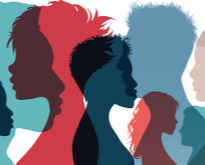Eurostat has a wide variety of statistics on women and men that will help anyone better understand gender equality. To help you navigate the website, we prepared a list of resources that you can click on and have direct access without having to spend any extra time searching for them.
First, you can start by visiting the Eurostat dedicated section on equality, which focuses on gender equality as well as age and disability equality. The dedicated section gives you direct access to the equality database, which has a section on gender equality and includes education, labour market, earnings and social inclusion, childcare, health and digital economy and society.
If you are looking for data with accompanying analysis, Eurostat has three Statistics Explained articles that focus exclusively on this topic: gender pay gap statistics, gender statistics (both updated yesterday) and SDG 5 - Gender equality, which provides a quantitative assessment of the progress of the EU towards this Sustainable Development Goal (SDG) of the United Nations in an EU context and also includes data on gender-based violence, employment and leadership positions.
Another resource that offers an interesting analysis on gender is “The life of women and men in Europe: 2021 interactive edition”. This interactive publication covers many fields from demographic information to education, work and career, internet use and family life, like childcare and housework. To make things more stimulating, this publication also includes a quiz for some educational play.
The labour market (including Labour Force Survey) database also offers data with breakdown analysis by sex, if you want to go deeper. The same happens with the EU statistics on income and living conditions survey (EU-SILC) which covers poverty, social exclusion, housing, labour, education and health. More information can be found on their respective dedicated sections on the labour market and income and living conditions.
Yesterday, Eurostat hosted a gender statistics webinar on the occasion of International Women's Day. Topics like the gender pay gap were discussed, so if you don’t want to miss a thing, visit the webinar's page and listen to the recording of the live event.
Leading up to this day, Eurostat published several articles on gender that might you help start on this issue or get an overall view of the present situation:
- Gender gap in self-employment increases with age
- Jobs with the highest share of women in Q3 2021
- Gender pay gap in the EU down to 13.0%
- Gender employment gap is larger for parents
- Environmental protection professionals: 50.5% women
- Women in the labour market by birth country
To contact us, please visit our User Support page.
For press queries, please contact our Media Support.




